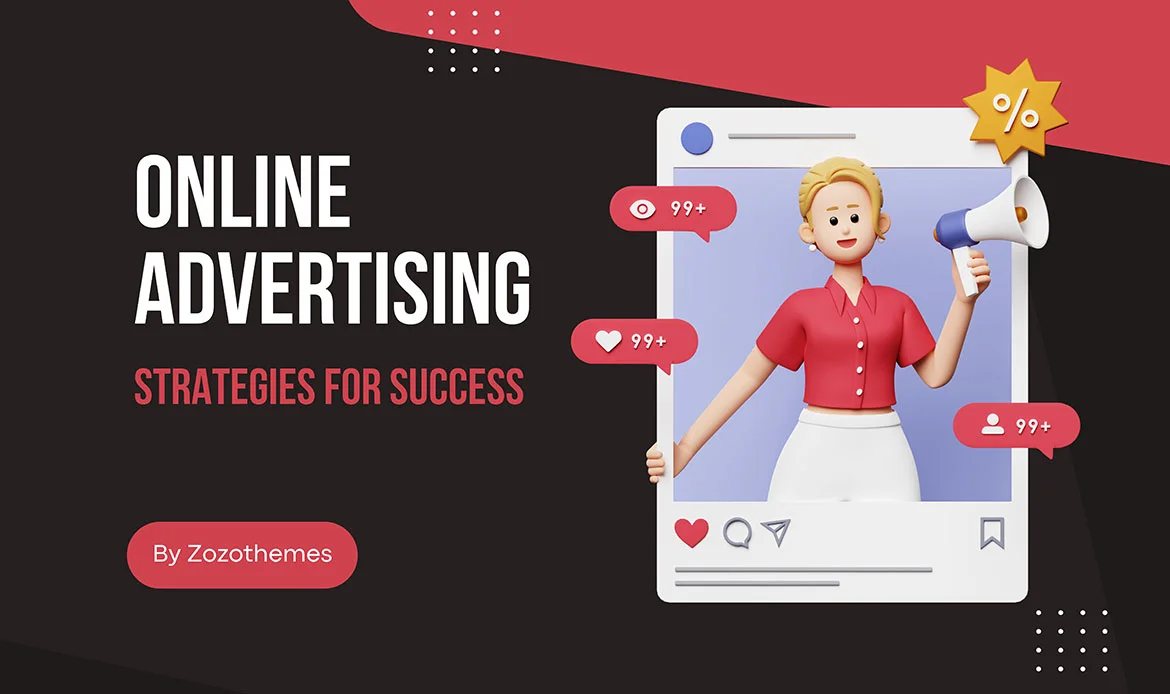Welcome to our comprehensive guide, “Mastering the Art of Online Advertising: Strategies for Success.”
In the dynamic realm of digital marketing, mastering the art of online advertising has become an imperative for businesses striving to thrive in the digital landscape. As technology evolves and consumer behaviors shift, the strategies employed in online advertising must continually adapt to stay effective. From dissecting the latest industry trends to unveiling proven tactics, this guide is a reservoir of knowledge designed to empower you with the tools and insights needed to craft compelling and effective online advertising campaigns. Whether you’re a seasoned marketer or just beginning your digital journey, join us as we explore the strategies that will elevate your online presence and drive success in the competitive world of digital advertising. Let’s embark on this transformative expedition together.What is Online Advertising?
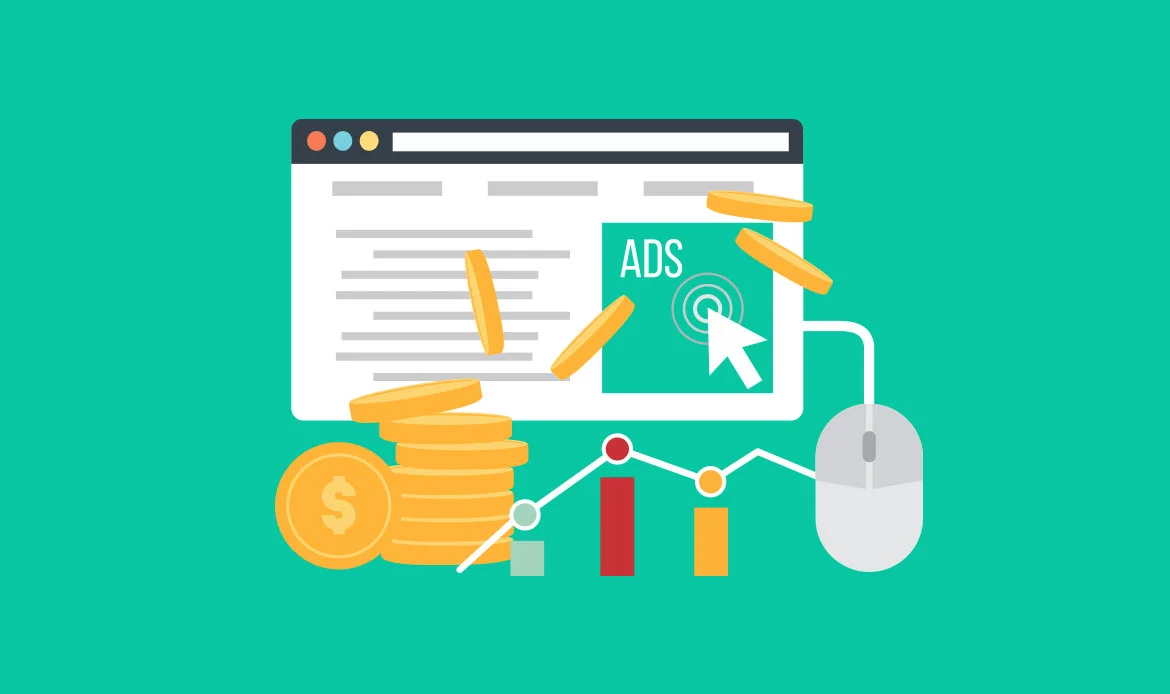
Online advertising, also known as digital advertising, is a marketing strategythat leverages the internet to deliver promotional messages to a targeted audience. Unlike traditional advertising, online advertising uses digital channels and platforms to reach consumers, including social media, search engines, websites, and mobile applications. The goal is to create brand awareness, drive traffic, and generate leads or sales through various online channels.
Key components of online advertising include
- Digital Channels: Online advertising utilizes a range of digital channels, including websites, social media platforms, search engines, email, and mobile apps. These channels provide diverse opportunities for advertisers to connect with their audience.
- Targeting and Personalization: One of the strengths of online advertising lies in its ability to target specific demographics, interests, and behaviors. Advertisers can tailor their messages to reach a particular audience, increasing the relevance of their ads and improving the chances of engagement.
- Interactivity: Online ads can be interactive, allowing users to click, explore, and engage with the content. This level of interactivity enables a more dynamic and immersive experience compared to traditional static advertising.
- Measurable Results: Digital advertising platforms provide robust analytics and tracking tools. Advertisers can measure the performance of their campaigns in real-time, gaining insights into metrics such as impressions, clicks, conversions, and return on investment (ROI).
- Various Ad Formats: Online advertising supports diverse ad formats, including display ads, video ads, social media ads, sponsored content, native advertising, and more. This flexibility allows advertisers to choose the format that best suits their goals and target audience.
- Global Reach: Online advertising transcends geographical boundaries, providing businesses with the opportunity to reach a global audience. This global reach is particularly advantageous for businesses looking to expand their market beyond local or regional boundaries.
- Dynamic Optimization: Online advertising campaigns can be adjusted and optimized in real-time based on performance data. This dynamic optimization allows advertisers to refine their strategies, allocate budgets effectively, and respond promptly to changing market conditions.
Types of Online Advertising
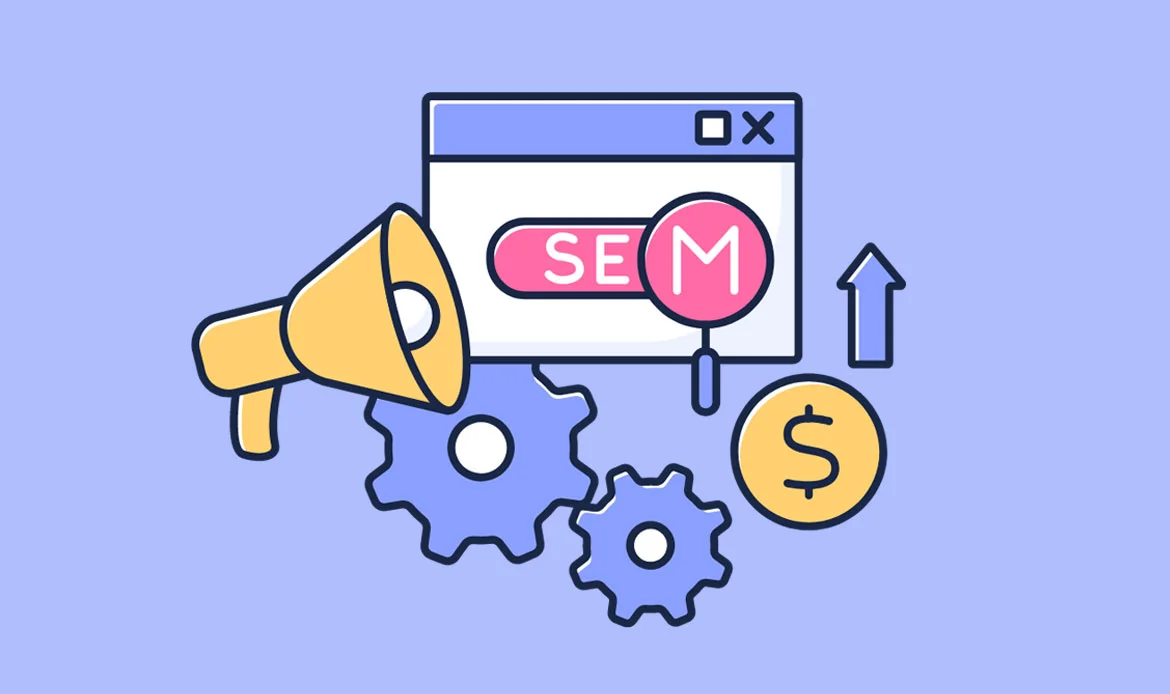
Online advertising encompasses various types, each designed to cater to specific marketing goals and target audiences. Here are some common types of online advertising, along with examples:
Search Engine Marketing (SEM)
Search Engine Marketing (SEM) or PPC advertising involves placing advertisements at the top of search results on platforms like Google.
SEM ads appear when users search for specific keywords pre-selected in your AdWords or search ads campaign. The placement of search ads is influenced by factors such as CPC, site quality, and contextual messaging.
The primary goal of these ad campaigns is to enhance brand awareness, drive clicks, and achieve conversions without relying on the gradual benefits of SEO. Essentially, SEM ads offer immediate results by tapping into existing search traffic. This advertising approach is versatile and applicable to various business models, including eCommerce, B2B SaaS, and service-oriented agencies.
Social Media Advertising

Social Media Advertising is most effective for businesses actively engaged on social networks with a substantial following. Formulating advertising campaigns on social media platforms is instrumental in fostering brand awareness, community building, audience outreach, and customer acquisition.
Given that a significant portion of individuals dedicate a considerable amount of time to social media, leveraging platforms like Facebook, Twitter, and LinkedIn for advertising enables you to reach both potential customers who have previously visited your website and attract new ones.
With the profound targeting and segmentation capabilities offered by social platforms, advertising becomes a logical choice for products and businesses aiming to boost revenues by reaching specific audiences.
Display Advertising
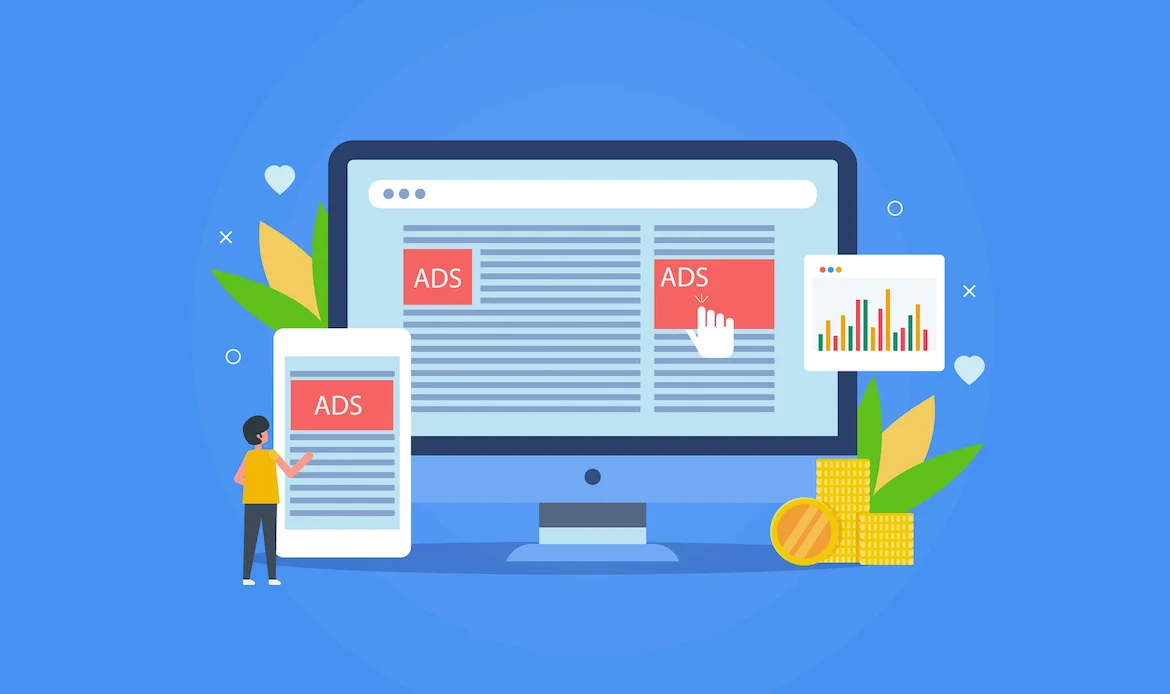
Display Advertising refers to visual advertisements strategically placed on third-party websites. Typically presented as images or videos in formats like display banners or blog banners, these ads find placement within the content of a website, blog, or online portal.
Securing ad space on popular blogs can be done by reaching out to publishers, or you can initiate a display ad campaign using platforms like Google AdWords. The pricing structure for such campaigns is based on the number of clicks or views, with charges incurred on a cost-per-click (CPC) or per thousand views (CPM) basis.
For those with eCommerce products, leveraging contextual ads on websites or blogs can yield impressive results in terms of impressions and conversions. A visually appealing display ad banner strategically placed can catch viewers’ attention, driving them to explore further on your website.
Video Advertising
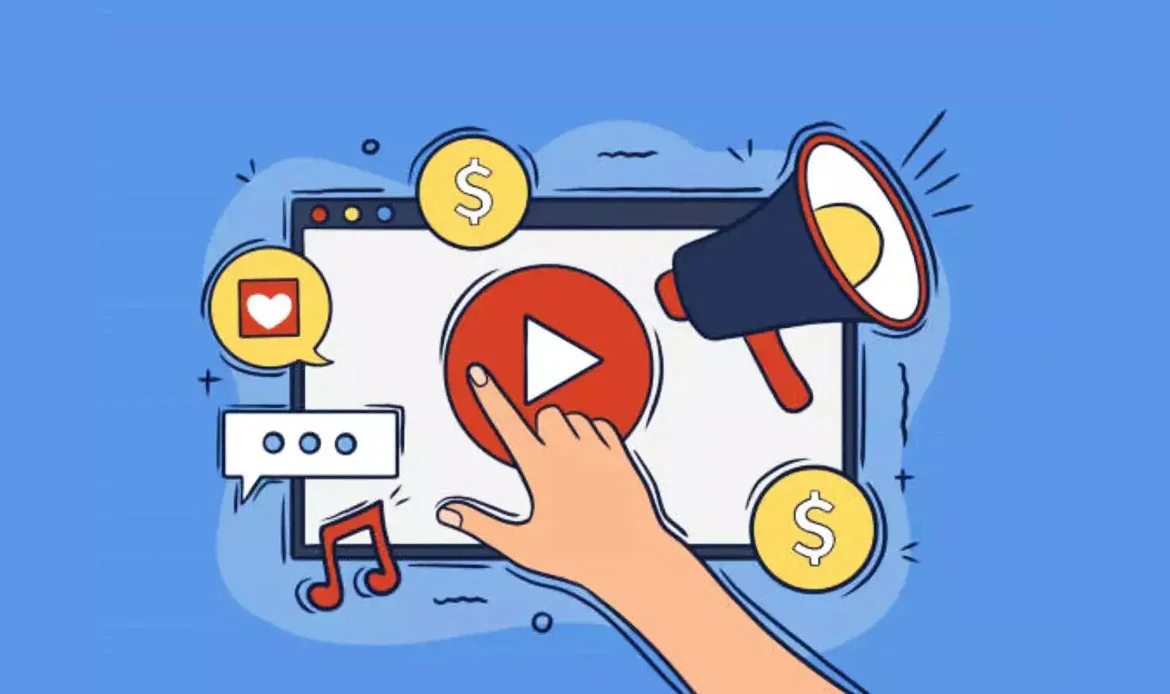
Video Advertising stands as one of the most effective methods for brand promotion. Capitalizing on people’s love for videos, these ads typically garner higher engagement compared to traditional banner ads.
Video ads provide an excellent platform to narrate compelling stories about your product, showcase its benefits, and convey your brand’s personality. Platforms like YouTube and TikTok offer avenues for video advertising, and collaborations with YouTubers for product reviews can be a fruitful strategy.
Creating original video content not only helps you connect emotionally with your audience but also contributes to improving organic search rankings through increased views and engagement.
Native Advertising
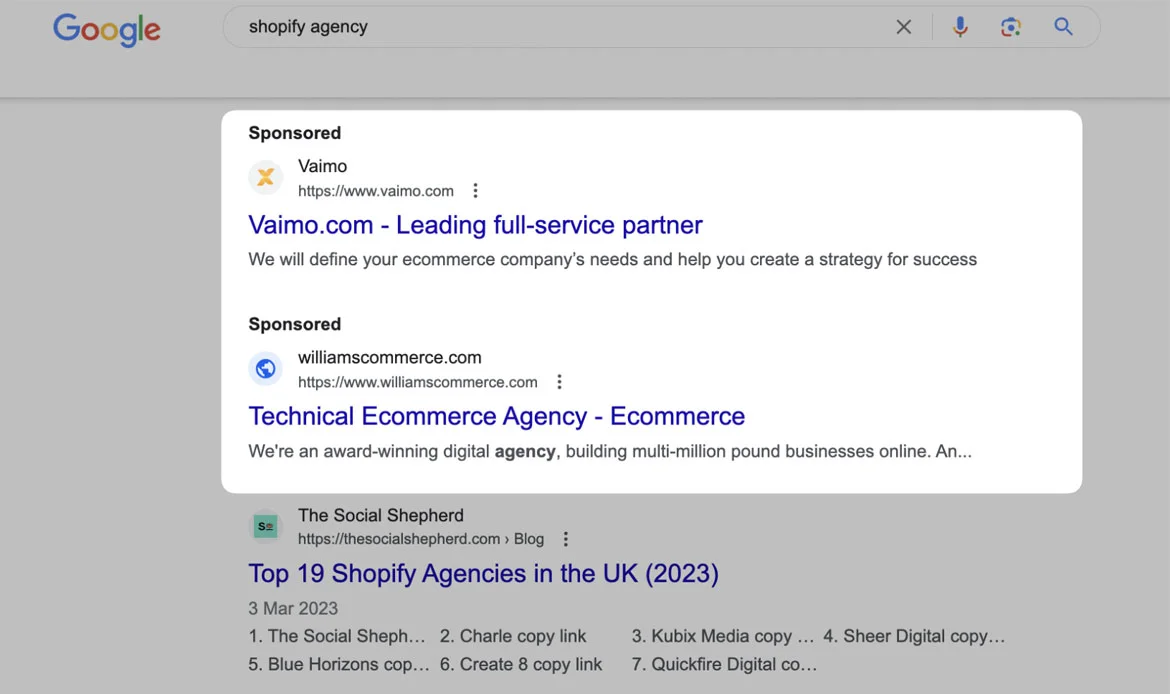
Native Advertising stands out from other online ad formats by seamlessly blending into the content, making them less recognizable as traditional ads. These in-line promotions are integrated within the content, providing an ‘add-on’ appearance that smoothly aligns with the user’s journey.
Unlike conventional ads, native ads are designed to add value to the user’s experience, often becoming a seamless part of the discussion. These ads aim to build trust by addressing users’ problems. A practical implementation of native ads involves creating a blog where you discuss topics related to your niche, offering valuable information and subtly promoting your products within the natural flow of the content.
Email Marketing

Email marketing serves as a widely adopted method for online advertising and connecting with your customer base. Employing an email marketing strategy enables you to provide a personalized experience for your subscribers while communicating your unique value proposition.
Through email marketing, you can effectively promote your products, conduct survey outreach, initiate newsletters, and nurture leads. Leveraging marketing automation tools allows for the creation of automated email campaigns, putting certain processes on autopilot. The effectiveness of email marketing campaigns is enhanced with the utilization of automation tools like Sender, resulting in high conversions and an impressive return on investment (ROI).
Tailored to your marketing objectives, you can effortlessly establish automated campaigns for newsletters, lead nurturing, remarketing emails, and more.
Content Marketing
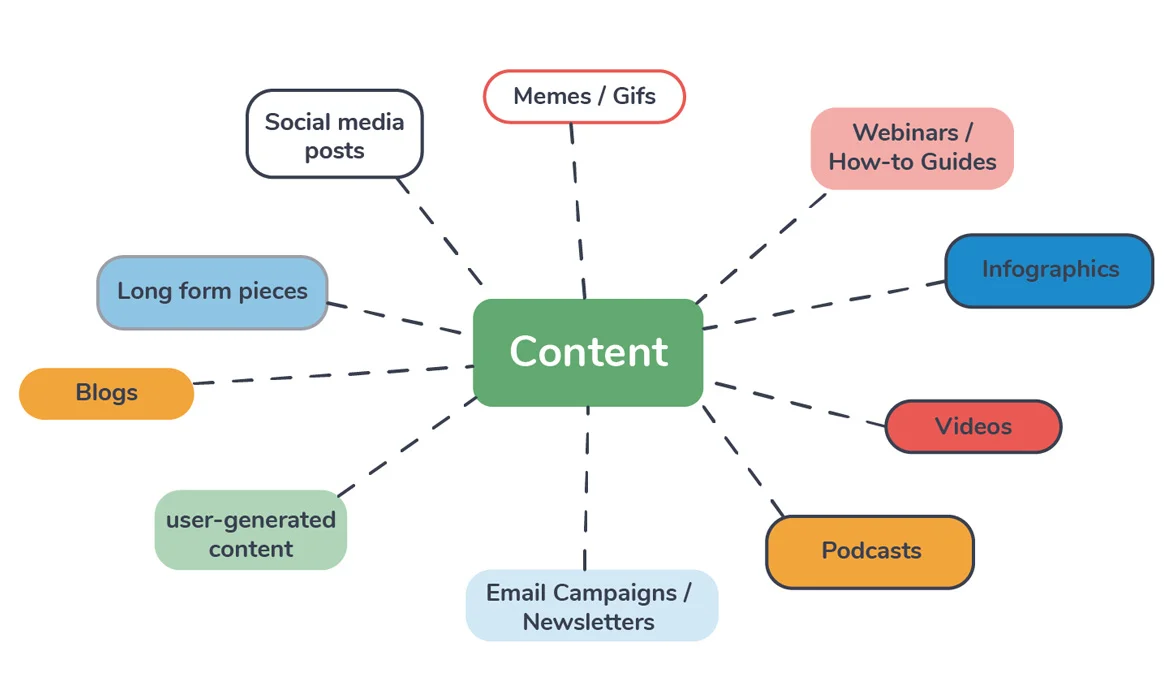
Content marketing emerges as a favored approach for online advertising, particularly for B2B SaaS, eCommerce, and service-oriented businesses. This strategy involves creating pertinent content that addresses specific queries of your target audience.
Commencing with content creation on your blog contributes to boosting your search engine rankings. When users search for related queries, your blog surfaces in the search results, providing solutions within your content. Users discovering your content can then explore your product or service, seamlessly integrated into your content.
In the contemporary landscape, content marketing has evolved with the proliferation of diverse distribution channels. Businesses repurpose existing content across social media platforms, newsletters, and communities, drawing additional visitors to their websites and landing pages.
Affiliate Marketing

Affiliate marketing is a performance-based marketing strategy where businesses reward affiliates (partners or publishers) for driving traffic or sales to their website through the affiliate’s marketing efforts.
Affiliates earn a commission or a predetermined amount for each customer or lead generated through their unique affiliate link. These links are tracked using cookies or other tracking technologies.
Parties Involved:
- Merchant or Retailer: The business that owns the product or service being promoted.
- Affiliate or Publisher: The individual or entity promoting the product or service through their marketing channels.
- Customer: The individual who clicks on the affiliate link and makes a purchase or completes a desired action.
Influencer Marketing

Influencer marketing involves collaborating with individuals who have a significant and engaged following, known as influencers, to promote products or services to their audience.
Brands partner with influencers who align with their target audience. Influencers create content showcasing the brand and share it with their followers on platforms like social media, blogs, or YouTube.
Types of Influencers:
- Macro-Influencers: Celebrities or individuals with a massive following.
- Micro-Influencers: Individuals with a smaller but highly engaged and niche audience.
- Nano-Influencers: Individuals with a modest following but strong community ties.
Banner Ads
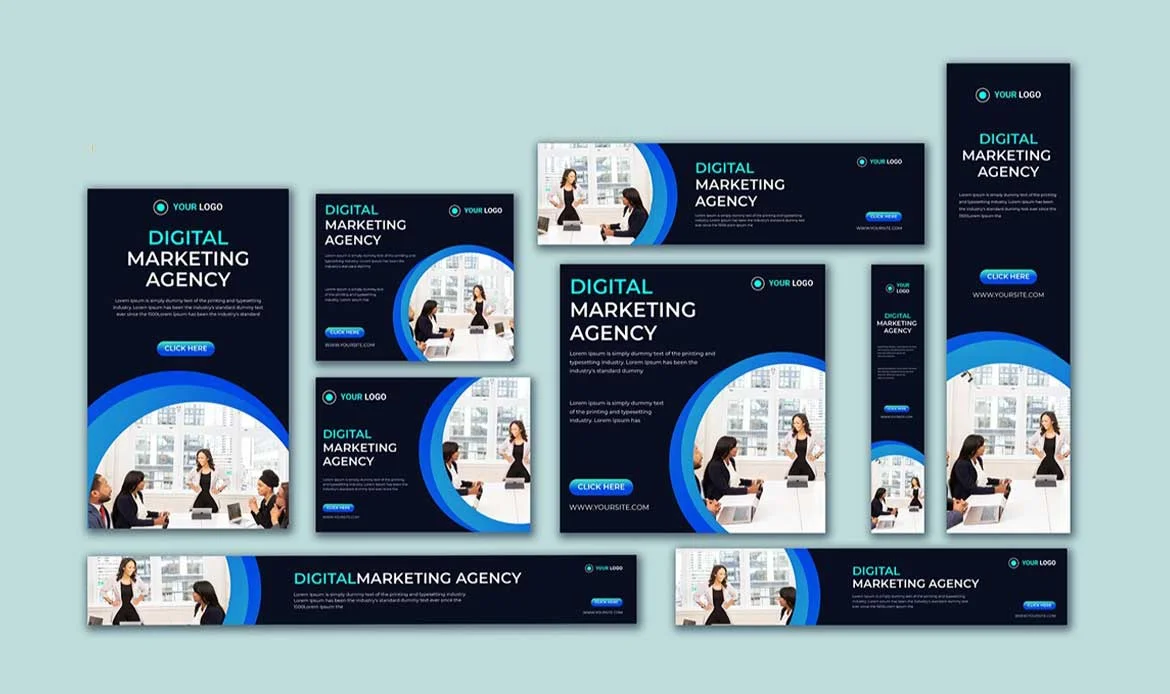
Banner ads represent a visual, image-based advertising format typically displayed on websites to promote a brand and drive traffic to the associated website or landing page.
Serving as a visual representation of your product, service, or offer, banner ads can be static, animated, or interactive rich media, tailored to your campaign goals. A key advantage of banner ads lies in their ability to leverage platforms such as the Google Display Network, reaching niche websites and their elusive audiences in a targeted yet cost-effective manner.
Whether the goal is to heighten brand awareness or channel traffic to web assets through special offers and promotions, a well-designed, strategically timed banner ad can prove its worth by attracting high-quality visitors that convert.
Retargeting Ads
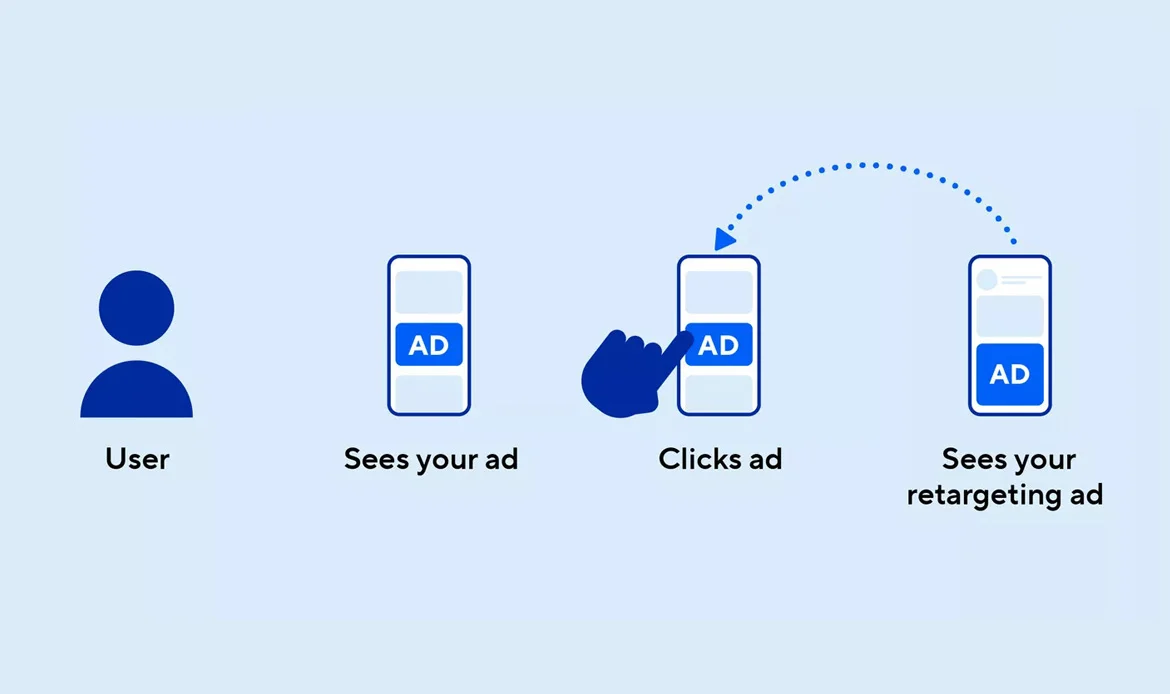
Retargeting ads, also known as remarketing ads, are a strategic form of online advertising designed to re-engage users who have previously visited a website but left without completing a specific action, such as making a purchase.
This technique relies on tracking technologies like cookies or pixels, which are placed on users’ browsers when they visit a website. As these users navigate away and browse other sites or social media platforms, retargeting ads are displayed to them. These ads showcase products or services they previously interacted with on the original site, aiming to bring them back and encourage the completion of the desired action.
The key advantages include increased chances of conversion, reinforcing brand recall, personalized ad experiences based on user behavior, and overall cost-effectiveness compared to acquiring new customers. However, challenges such as ad fatigue, privacy concerns, and the need for accurate audience segmentation should be carefully addressed for an effective retargeting strategy.
Most Effective Forms of Online Advertising
To fully leverage the potential of online advertising, it’s essential to allocate your budget to the most effective channels. In 2023, organic reach across platforms is anticipated to be at an unprecedented low, underscoring the significance of utilizing paid channels for promoting your products and services. Here are three highly effective online advertising channels to consider:Email Advertising
Distinguished from email marketing, email advertising involves the strategic placement of ads within emails or their delivery through email campaigns. With the projected number of email users reaching 4.6 billion by 2025, it provides a direct and impactful way to showcase your product, service, or offer.
Email advertising can manifest in various forms, such as banner ads in newsletters, sponsored content, footer ads, or collaborative promotions with non-competing businesses. Given that these ads reach targeted subscriber segments within their inboxes with permission, higher conversions and improved sales outcomes can be expected.
Paid Search Advertising
Paid Search Advertising, also known as PPC advertising, is a potent online advertising strategy enabling you to bid for top positions on Search Engine Results Pages (SERPs). According to TechJury, PPC boasts an impressive ROI of up to 200%, generating twice the number of visitors compared to SEO.
This approach is particularly effective for companies aiming at brand awareness and qualified website traffic. Platforms like Google AdWords and other PPC advertising channels provide the means to initiate paid search advertising campaigns for your brand.
Paid Social Media Advertising
Social media advertising stands as the second most effective online advertising form following search advertising, constituting 33% of all digital advertising spending, as per a survey. The remarkable retargeting capabilities and expansive reach make it a favored choice for B2B, B2C, and eCommerce brands.
Initiating advertising on social media platforms like Facebook, Instagram, and TikTok is accessible with a modest ad spend, allowing for scalable campaigns aligned with your goals and advertising budget.
Examples of Online Advertising
Online advertising encompasses various strategies and platforms, each tailored to engage specific audiences. Let’s delve into some examples to better understand the versatility of online advertising:
Google Ads:
Google Ads is a powerful platform allowing businesses to display targeted ads on Google’s search engine results pages and across its expansive display network.
Example:
A shoe retailer bidding on keywords like “running shoes” to appear at the top of Google search results, reaching users actively searching for such products.Facebook Ads:
Facebook Ads enables the creation of visually compelling ads with precise targeting options, reaching specific demographics and users with particular interests.Example:
An online fitness apparel brand creating ads targeting users aged 25-35 interested in fitness and yoga, displayed prominently on users’ Facebook feeds.YouTube Ads:
Leveraging the vast audience on YouTube, advertisers can showcase video content to engage and captivate users on the world’s largest video-sharing platform.Example:
An electronics company launching a new smartphone featuring a creative video ad that appears before or during relevant YouTube videos, capturing the attention of tech enthusiasts.Email Campaigns:
Email campaigns involve sending personalized promotional emails to subscribers, showcasing product launches, exclusive offers, or relevant content .Example:
An online bookstore sending a targeted email to subscribers promoting a weekend sale on best-selling novels, creating a sense of exclusivity and urgency.Instagram Sponsored Posts:
Instagram Sponsored Posts involve collaborating with influencers or promoting posts to reach a broader audience on this visual-centric platform.Example:
A beauty brand partnering with a makeup influencer to create a sponsored post featuring their latest products, reaching the influencer’s followers and expanding brand visibility.These examples highlight the adaptability of online advertising, allowing businesses to tailor their approach based on goals, target audiences, and the nature of their products or services. Whether through search engine visibility, social media engagement, video content, email communication, or influencer partnerships, online advertising offers a multifaceted toolkit for businesses to connect with their audience in meaningful ways.
Latest Online Advertising Statistics
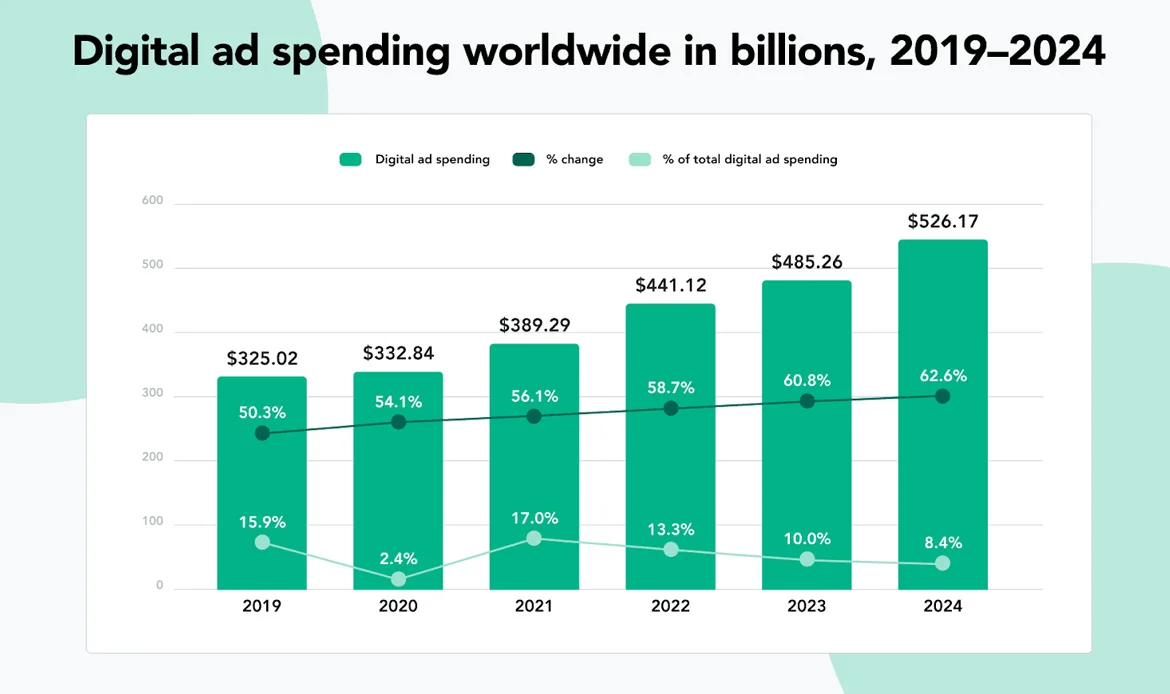
In spite of the economic challenges posed by the 2020 pandemic, online advertising spending exhibited continuous growth in both 2023 and 2024, setting the stage for promising future figures. With the trajectory of spending on the rise, the online marketing ecosystem is poised to become more competitive than ever in 2025. Marketers and business owners must prioritize personalizing the customer experience and refining advertising communication to truly stand out in this dynamic landscape.
We have curated the most recent online advertising statistics to underscore the significance of digital ad spending and elucidate why establishing a presence through digital ads is imperative for the growth of your business. These statistics underscore the preeminence of digital advertising strategies and underscore the pivotal role digital campaigns play in the business landscape of 2025.
Online Advertising vs. Traditional Advertising Statistics:
- 56% of overall marketing funds are channeled into online platforms. In comparison, businesses directed a substantial $436 billion towards digital advertising, surpassing the $196 billion spent on offline advertising.
- A typical local business designates 5-10% of its revenue for digital marketing, while larger enterprises allocate approximately 14% of their business budget to online marketing. The global expenditure on search advertising reached an estimated $144.8 billion.
- Projections indicate that companies are gearing up to invest approximately $485 billion in digital advertising in the year 2023.
Digital Advertising Statistics
- Anticipated for the year 2023, global digital advertising expenditure is expected to reach a substantial $602.25 billion, with search advertising emerging as the predominant segment in this dynamic landscape.
- The United States is poised to lead the global digital advertising spending, with an estimated $232.70 billion earmarked for 2023.
- Looking ahead to 2026, a noteworthy 69% of overall advertising spending is projected to be generated through smartphones, reflecting the increasing influence and reach of mobile devices in the advertising realm.
- Engaging in retargeting strategies proves highly effective, with customers demonstrating a significant 70% higher likelihood of making a purchase when exposed to retargeting ads.
- Facebook and Google Ads emerge as the crème de la crème among paid digital advertising channels, boasting the highest return on investment (ROI) and proving to be formidable platforms for achieving marketing objectives.
- Underlining the versatile impact of digital advertising, these strategies have the potential to amplify brand awareness by an impressive 80%, solidifying their role as indispensable tools in the modern marketing landscape.
Social Media Advertising Statistics
- Social media advertising commands a significant share, constituting 33% of the overall digital ad spending in the year 2023.
- The social media market is anticipated to reach a valuation of $231.1 billion in 2023 and is poised for substantial growth, projected to soar to $434.87 billion by 2027.
- A staggering 91% of businesses actively employ social media platforms for marketing and advertising endeavors.
- Facebook emerges as a dominant force in the social media advertising realm, with 86% of businesses utilizing it as a key platform for their advertising strategies.
- TikTok emerges as the fastest-growing social media platform, with an impressive 40% of business owners intending to incorporate it into their social media strategies.
- A significant 91% of consumers access social media from mobile devices, highlighting the pervasive influence of mobile platforms in social media engagement.
- Currently, less than 5% of businesses leverage Facebook video ads, suggesting an untapped potential for this dynamic advertising format.
- Snapchat users exhibit a high likelihood (60%) of making impulse purchases and completing transactions through their mobile devices.
- LinkedIn is recognized by U.S. consumers as the most trusted platform when it comes to advertising, underlining its credibility in the professional networking space.
- Approximately 25% of TikTok users engage in product research or make purchases following exposure to a TikTok ad or organic post.
- The majority of Pinterest users (95%) utilize the platform for planning or making purchases, with 52% of them discovering products on Pinterest and subsequently making online purchases.
PPC Advertising Statistics
- In the year 2024, global expenditures on paid search ads are projected to soar to $190.5 billion, underlining the enduring significance of Pay-Per-Click (PPC) advertising on a global scale.
- Small to mid-sized enterprises, as a benchmark, allocate an estimated monthly budget ranging from $9000 to $10,000 for their PPC campaigns.
- Demonstrating a noteworthy return on investment, businesses, on average, generate $2 for every $1 spent on PPC ads, emphasizing the profitability of this advertising model.
- Globally, 32% of companies utilize PPC as a direct sales channel to connect with and sell products to their customers.
- The effectiveness of PPC is underscored by its ability to attract twice as many website visitors compared to organic Search Engine Optimization (SEO) strategies.
Mobile Advertising Statistics
- The trajectory of mobile advertising spending is set to surpass $339 million by 2023, illustrating the increasing focus on reaching audiences through mobile platforms.
- A compelling 78% of mobile searches translate into in-store retail conversions, highlighting the substantial impact of mobile advertising on offline consumer behavior.
- Mobile users contribute significantly to the PPC landscape, accounting for 52% of all PPC ad clicks, showcasing the dominance of mobile devices in engaging with paid advertisements.
- A substantial 94% of Facebook’s digital ad revenue is attributed to mobile advertising, further emphasizing the pivotal role of mobile platforms in the social media giant’s revenue stream.
Video Advertising Statistics:
- Video advertising stands out as a potent tool, contributing to an impressive 86% increase in conversion rates, showcasing the persuasive influence of video content.
- Consumers report a remarkable 136% surge in brand association after engaging with video content, illustrating the profound impact that well-crafted videos can have on brand perception.
- The shopping journey often begins with video content, as evidenced by 80% of shoppers who watch a YouTube video at the outset of their shopping process.
- A resounding 90% of consumers affirm that videos play a decisive role in their buying decisions, emphasizing the persuasive nature of visual content.
- Globally, 40% of shoppers make purchases based on products discovered through YouTube, highlighting the platform’s role in influencing consumer behavior.
- Video ads carve a significant niche in the digital advertising space, contributing to more than half of Twitter’s digital advertising revenue.
Major Highlights
Adaptability is Crucial: The digital landscape is dynamic, requiring businesses to adapt their online advertising strategies continuously. Content Quality Matters: High-quality, relevant content is the backbone of effective online advertising. Data-Driven Decisions: Analytics and data insights should drive advertising decisions, allowing for continuous optimization. Diversification is Key: Utilize a mix of online advertising types to reach a broader audience and maximize impact. Stay Informed: Regularly monitor industry trends, statistics, and emerging technologies to stay ahead of the curve.Frequently Asked Questions About Online Advertising Strategies
What are the most effective online advertising platforms in 2025?
The top platforms include Google Ads for search visibility, Facebook and Instagram for social engagement, LinkedIn for B2B targeting, and TikTok for reaching younger audiences. Choosing the right platform depends on your target audience and campaign goals.
How can businesses optimize their online advertising campaigns?
Businesses can optimize campaigns by analyzing performance metrics, refining targeting options, testing different ad creatives, and using AI-driven tools for automation. Continuous monitoring and adjustment help maximize ROI and reach the intended audience effectively.
Why is online advertising essential for business growth?
Online advertising enables brands to reach a global audience, drive targeted traffic, and increase conversions. Unlike traditional methods, it offers precise targeting, measurable results, and cost-effective solutions, making it crucial for sustainable business growth.
Conclusion
As we conclude our expedition through the intricate landscape of online advertising, it’s evident that mastering this art is both an evolving challenge and an exhilarating opportunity. In this guide, “Mastering the Art of Online Advertising: Strategies for Success,” we’ve navigated the ever-shifting tides of digital marketing, uncovering strategies that transcend trends and stand the test of technological evolution.
Armed with insights into proven tactics, cutting-edge trends, and the dynamic nature of consumer engagement, you’re poised to not just keep pace but to lead in the realm of online advertising. Remember, success in digital campaigns is a fusion of art and science, where creativity harmonizes with data-driven precision
Master the Art of Online Advertising and Drive Real Results!
Boost visibility, attract the right audience, and watch your business grow — it’s time to turn every click into a real conversion with intelligent ad strategies and powerful marketing themes! digital-first world.

